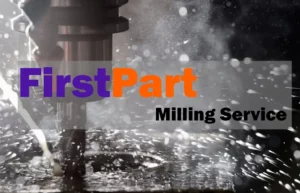Workpiece Loading Options for CNC Machining
It is almost impossible to highlight the importance of securing a workpiece before commencing any machining work in your workshop. Workpiece loading involves the methods and procedures carried out to load and hold a workpiece during manufacturing. It is all essential process that can help mitigate several risks around safety, part accuracy, precision and overall job quality.
Because of the many “what-could-go-wrongs” when dealing with an insecure or loosely held workpiece, we have decided to share the best methods that will help you keep your workpiece stable, when to use each method and the benefits of each loading technique. Let’s delve right into it.
1. Gluing
Gluing is one of the most popular means for securing workpieces in a CNC machine shop. Glues will generally harden faster on metal parts than non-metallic parts. Many machinists opt to glue their workpiece to their worktable with the aid of a bakelite block or non-metallic materials as it is helps reduce the chances of hardening too fast or workpiece damage. Gluing will require some level of layering of the work area before the adhesive and part are brought in contact; this is done to ensure that the workpiece is properly balanced before machine operations commence.
Gluing is ideal for materials and workpieces with flat bases. Materials with irregular geometry may also be secured with glues as long as a firm part of the material is secured to the bakelite table. This method of workpiece loading does away with the need for workholding tabs. It is quick, affordable and reliable. However, precaution should be taken with adhesive chemicals cold or hot.
Glue may also damage some part (often the base) of your workpiece on removal and will take manual effort to remove the workpiece from the work area. To prevent this, ensure that you only apply your adhesive in areas that aren’t important to the part functionality or aesthetic. Also, try to limit the use of excess glue by keeping it thin and evenly spread.
2. Vises
Vises are mechanical apparatus used in loading and securing workpieces. Vises have parallel jaws, with one immovable and the other mobile, along with a screw and lever for holding and fastening the workpiece from wither ends as the CNC machines the material. They are ideal for fast paced work at high velocity and for workpieces with straight and edges. When dealing with parts with irregular geometries, vises will require custom jaws to support the workpiece.
Vises are popular in CNC hubs as they can be used in their numbers to secure different part for simultaneous machining
3. Clamps
Clamps are one of the most common options for securing workpieces in CNC machine shops. Clamps are available in a wide variety including C-clamps, flat pliers combination clamps and hydraulic clamps. Each type of clamp has its unique advantage that makes it practical to the work being done.
The C-clamps are affordable, easy-to-use options that are ideal for flat material surfaces. Their simplicity often means that they may not be able to deliver on heavy-duty materials while maintaining balance. The vibration of machining may also affect their stability during operation, which is why they are recommended for basic machining. Hydraulic clamps use appreciable engines to position, support and secure the workpiece through hydraulic force. They also facilitate heavy-duty operations, high-speed cutting, multi-clamping features and automatic controls.
Combination clamps house a number of components that serve various function, capacity and sizes. They can be assembled with the requirements of the processing and machining line to secure a workpiece. The combination clamp is very efficient, saving time and effort and is particularly suitable for small batches of production runs. The benefits of using combination clamps include the clamping flexibility, resilience, energy and material saving, positioning accuracy and ability to handle workpieces with slightly complex geometries.
Clamp operations and efficiencies may generally be improved with smooth clamp bases or specialty magnetic solutions; these two sets of accessories will enhance the balance, positioning, efficiency and cutting force resistance of the machine tools and centers.
4. Tables
Vacuum and magnetic clamping tables are used to hold workpieces by the use of pressure and magnetic force respectively. In vacuum tables, the device consists of a vacuum chamber and pump at opposite ends, generating a force that results from the difference in the atmospheric pressure and vacuum pressure that is strong enough to push down and hold the material.
Vacuum tables are highly recommended for flat sheet work to be done on CNC routers. They are very versatile, serving a wide range of material accurately and efficiently. Vacuum tables are also used for small workpieces that may otherwise impossible to secure on a clamp. They have very fast loading times with flat materials, however, dealing with complex geometries may require considerable effort.
Magnetic tables on the other hand applies a magnetic force to hold and secure the workpiece. They are, however, limited use for an array of metals with suitable magnetic properties but can serve light and heavy machining. They are popular for securing steel workpieces, allow for fast setups and require no physical clamps as they are electromagnetic in nature. Magnetic tables are safe and secure with their only downsides being non-applicable to non-magnetic materials/metals.
FirstPart CNC Machining in China
FirstPart is one of China’s leading manufacturing hub for Additive, CNC and Conventional manufacturing techniques. We boast of excellent in-house capacity, labor force and logistics while delivering exceptional value for money. Our array of services include CNC machining, 3D printing, Rapid Tooling, Die casting, Rapid prototyping, Plastic Injection Molding, Urethane Casting, Aluminum Extrusion, Post-machining/Finishing services and much more.
As we understand the challenges that is faced by large- and small-scale businesses, engineers and product developers, we offer both mass production, bridge tooling and low-volume prototyping/manufacturing. Our services are flexible, saleable and innovative, with a team of engineers and design experts available to support you through your entire product development cycle.










